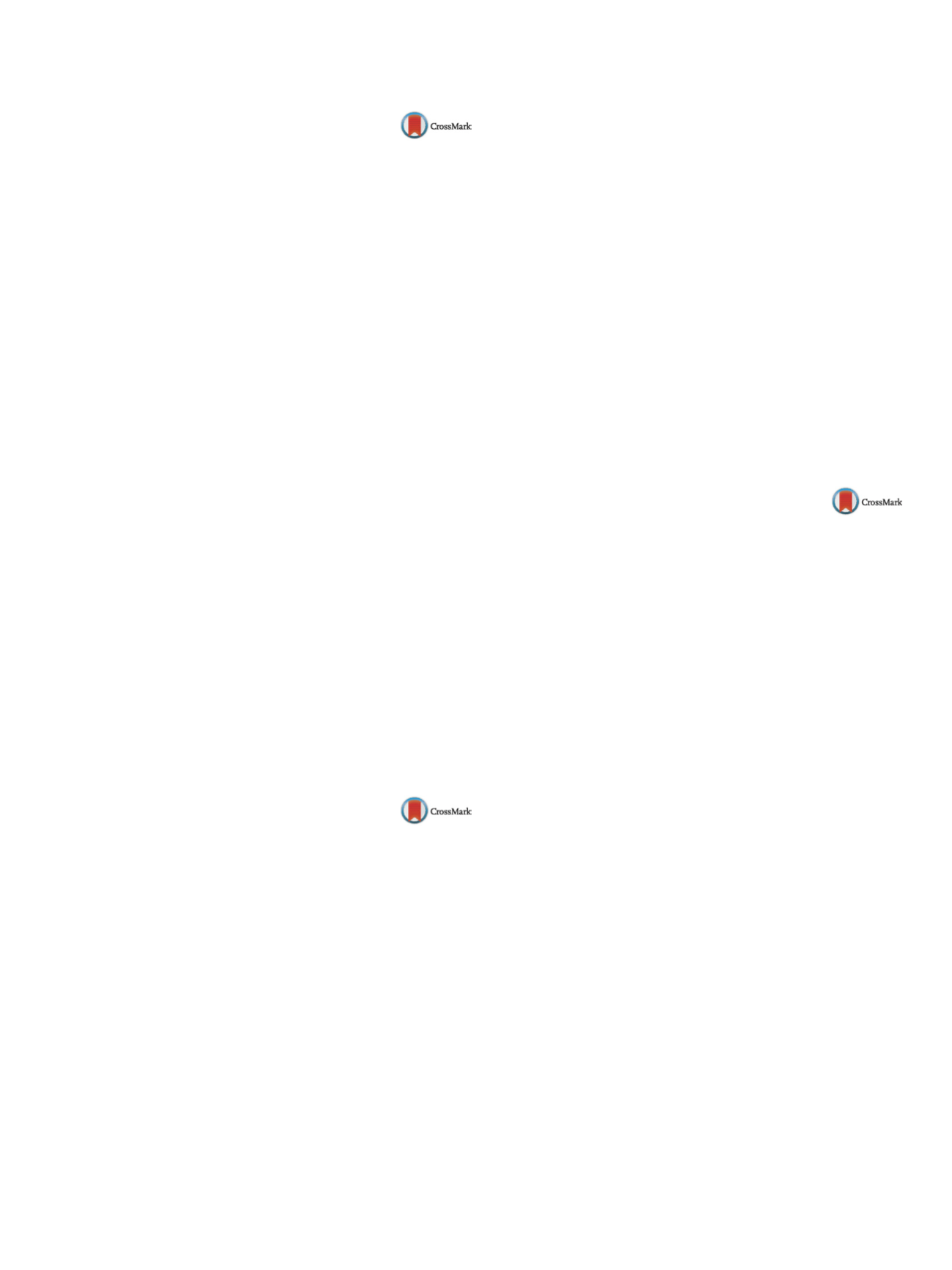

25th European Congress of Psychiatry / European Psychiatry 41S (2017) S405–S464
S439
EV0109
Association of adolescent symptoms
of depression and anxiety with daily
smoking and nicotine dependence in
a sample of Tunisian teenagers
L. Ghanmi
1 ,∗
, S. Elleuch
1, M. Daoud
1, K. Zitoun
1, L. Zouari
2,
M. Maalej
21
Regional Hospital of Gabes, Psychiatry, Gabes, Tunisia
2
University Hospital Hedi Chaker, Psychiatry “C”, Sfax, Tunisia
∗
Corresponding author.
Aims
To examine the association of adolescent depression and
anxiety symptoms with daily smoking and nicotine dependence in
Tunisians teenagers.
Design
A cross-sectional study including teenagers (
n
= 162) from
two colleges located in Gabes (south of Tunisia) and used a self-
administered anonymous questionnaire. Adolescent depression
and anxiety symptoms were assessed using the Hospital Anxiety
and Depression scale translated and validated in Tunisia. adoles-
cent tobacco use was defined as: daily use (6 or 7 days per week)
and the loss of autonomy over tobacco use was evaluated with the
Hooked on Nicotine Checklist (HONC).
Findings
The prevalence of smoking was 61.7%. It was 92% for
boys and 8% for girls. In our sample, 30.7% of teenagers used manu-
factured cigarettes and chicha; 93.8% of daily smokers had already
lost control of their smoking. Their average score the HONC was 5.5
(gap deviation 2.4). Of these, 61.3% had a score greater than or equal
to 5. Rates of anxiety and depressionwere respectively 43% and 20%.
Nicotine-dependent adolescents were significantly more anxious
than non-dependent: 68.3% vs. 48.7% (
P
= 0.04). We do not note sig-
nificant differences between depressed teenagers and adolescents
without depression, regarding nicotine dependence.
Conclusions
Smoking is frequent among teenagers in Gabes. Ado-
lescent smokers with anxiety symptoms are at increased risk for
nicotine dependence. These results incite to pursue work that takes
account of the specific diagnosis and treatment of tobacco depend-
ence among adolescents, especially when psychiatric comorbidity
makes smoking cessation more difficult.
Disclosure of interest
The authors have not supplied their decla-
ration of competing interest.
http://dx.doi.org/10.1016/j.eurpsy.2017.01.438EV0110
Efficacy of romantic and sexual
psycho-educational training for
adolescent with high-functioning
autism spectrum disorder: A pilot
study
G. Giovagnoli
1 ,∗
, G. Mossolani
2, E. Napoli
1, M. Pontillo
1,
S. Vicari
1, L. Mazzone
11
Children Hospital Bambino Gesù, Child Neuropsychiatry, Roma, Italy
2
Istituto ReTe, Child Neuropsychiatry, Rome, Italy
∗
Corresponding author.
Introduction
Romantic and sexual functioning in individualswith
autism spectrum disorder (ASD) are understudied. Recent find-
ings evidenced that adolescents and adults with present romantic
and sexual behaviors comparable with their neurotypical peers.
However, it is worth to note that dysfunctional and inappropriate
romantic and sexual behaviors are often described in this popula-
tion.
Objectives
To investigate efficacy of a psycho-educational train-
ing in a small group of adolescent with high-functioning ASD (HFA,
QI > 70).
Methods
Six adolescents (all males, range age 14–16 years) have
been evaluated before (T0) and after (T1) a 10-session sexual and
romantic psycho-educational structured group training, of 90 each
session. Clinical evaluation included parent-report questionnaires,
as SBS for sexual behaviors and CBCL for behavioral problems, and
a self-report questionnaire for sexual behaviors, called SESAMO.
Moreover, autistic symptoms were investigated with ADOS-2 at
T0.
Results
Preliminary analysis revealed a statistically significant
differences between T0 and T1 in sexual education (
P
= 0.02) and
frequency of dysfunctional sexual behaviors (
P
= 0.02) of SBS and
in sexual expectations about the partner in SESAMO (
P
= 0.04). No
differences were found in CBCL.
Conclusion
Preliminary results showed an improvement of
romantic and sexual functioning in adolescent boys with HFA, as
reported by either parents and adolescents, after participating to
a structured psycho-educational training. More sexual education
and information, less inappropriate sexual behaviors and more-
appropriate expectations about potential partner were reported at
the end of the training. These results should be confirmed in studies
including larger ASD and control sample.
Disclosure of interest
The authors have not supplied their decla-
ration of competing interest.
http://dx.doi.org/10.1016/j.eurpsy.2017.01.439EV0111
Attention deficit hyperactivity
disorder (ADHD) and borderline
personality disorder
(BPD) – intersections systematic
review
C. Gomes Cano
1 ,∗
, S. Pires
1, A.C. Serrano
21
Hospital Dona Estefania, Woman, Child and Adolescent
Department, Lisboa, Portugal
2
Hospital Garcia de Orta, Child and Adolescent Psychiatry Unit,
Pediatric Department, Almada, Portugal
∗
Corresponding author.
Given the well-known overlap of symptoms and diagnosis crite-
ria between attention deficit and hyperactivity disorder (ADHD)
and borderline personality disorder (BPD), recent studies have been
made in this mental health research field. It is frequently observed
that adults with a BPD diagnosis show a history of childhood ADHD
symptoms, as well as a diagnosis for both diseases as adults. Even
though many hypotheses have been presented, the nature of the
relation between these two conditions is yet to be established. Thus,
the authors consider the revision of the existing studies concerning
how ADHD and BPD are related to be pertinent.
PUBMED was used as a research source, with the search terms
attention deficit and hyperactivity disorder and borderline per-
sonality disorder. Thirteen studies showing different possibilities
and association mechanisms between ADHD and BPD were eligi-
ble for revision. All the studies have shown a statistical association
between both diseases.
The data mostly support the hypotheses that the two perturbations
correspond to the same disease in different stages of evolution; that
both are different diseases sharing a common etymological basis;
that both perturbations are synergic, mutually powering each other
while in comorbidity or that childhood ADHD may be a precursor
to BPD during adolescence/adulthood.
The necessity for more studies becomes evident, namely about the
influence of the precocious treatment for ADHD and the develop-
ment of BPD in the future and other potential factors that may be
involved in this association.
Disclosure of interest
The authors have not supplied their decla-
ration of competing interest.
http://dx.doi.org/10.1016/j.eurpsy.2017.01.440

















